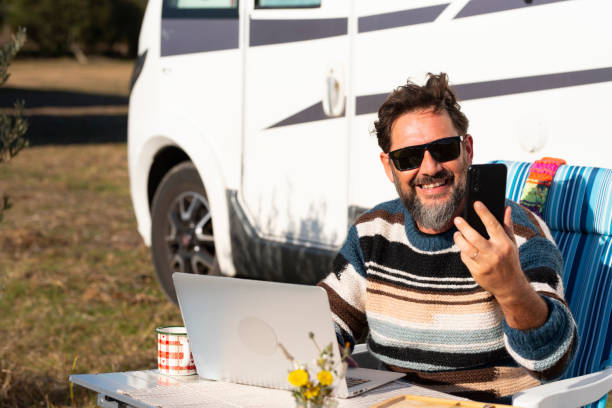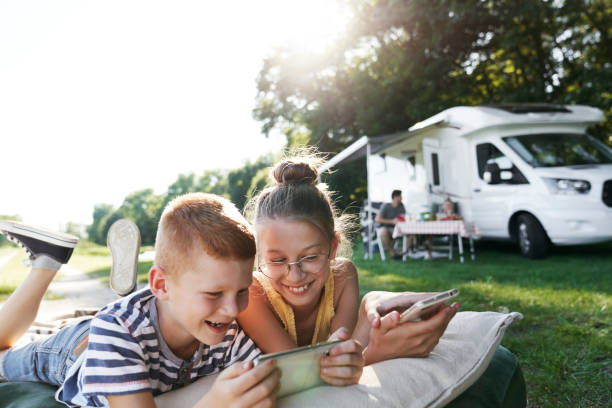Camping is a fantastic way to escape the hustle and bustle of everyday life and keep yourself busy with nature. But let’s admit it, even when you’re enjoying the great outdoors, staying connected to the internet is very important. Whether you need it for navigation, staying in touch with loved ones, or sharing your adventures on social media, having reliable Wi-Fi while camping can make a big difference. In this guide, we’ll talk about various ways to get Wi-Fi while camping and make sure you stay connected no matter how remote your campsite might be. Let’s get started without any further ado.
Why do you need Wi-Fi while camping?
Wi-Fi while camping can be pretty handy for a few reasons. First off, if you’re lost or need directions, you can use maps on your phone to find your way back. Secondly, if you want to stay in touch with family and friends, you can use Wi-Fi to chat with them or share pictures of your camping adventure. Also, if you’re working or studying, you might need Wi-Fi to access important emails or do research. Overall, having Wi-Fi while camping makes it easier to stay connected and handle any unexpected situations that might come up.
Internet Options for Campers
1. Mobile Hotspots
A mobile hotspot is a portable device that uses mobile data to create a Wi-Fi network you can connect to with your devices. It’s an excellent solution for getting Wi-Fi on the go.
Best Mobile Hotspots for Camping
Top mobile hotspots for camping include:
- Verizon Jetpack MiFi 8800L: It is known for its excellent coverage and battery life.
- Nighthawk M1 Mobile Router: Offers fast speeds and can connect multiple devices.
- Skyroam Solis Lite: Ideal for international travel with its global coverage.
How to Set Up and Use a Mobile Hotspot
Setting up a mobile hotspot is simple. Just turn on the device, connect it to your phone or computer via Wi-Fi, and you’re good to go. So make sure to monitor your data usage to avoid extra charges.
2. Smartphone Tethering
Tethering turns your smartphone into a mobile hotspot. Your phone’s data plan provides internet access to other devices via Wi-Fi, Bluetooth, or USB.
Setting Up Tethering on Different Devices
- For iPhones, go to Settings > Personal Hotspot to enable tethering.
- On Android, it’s typically found under Settings > Network & Internet > Hotspot & Tethering.
Tips for Maximizing Tethering Efficiency
To make the most of tethering, place your phone in an area with strong signal reception, limit the number of connected devices, and use it sparingly to conserve data.
3. Portable Wi-Fi Devices
Portable Wi-Fi devices, or travel routers, connect to various internet sources and provide a Wi-Fi network. They’re compact and easy to use.
Top Portable Wi-Fi Devices for Camping
- TP-Link N300 Wireless Portable Nano Travel Router: Affordable and reliable.
- iNet GL-AR750S-Ext Gigabit Travel Router: Offers dual-band Wi-Fi and VPN support.
- RAVPower FileHub: Combines router, power bank, and file hub functions.
4. Satellite Internet
Satellite internet uses satellites to provide internet access in remote locations. It’s slower and more expensive than other options but works where mobile signals can’t reach.
Best Satellite Internet Options for Campers
- Viasat: Offers good coverage and decent speeds.
- HughesNet: Known for reliability and customer service.
- Starlink: Elon Musk’s SpaceX project provides faster speeds but is still expanding its coverage.
5. Signal Boosters and Antennas
Signal boosters amplify weak cellular signals, improving connectivity for mobile hotspots and smartphones.
Types of Signal Boosters and How They Work
- Vehicle Boosters: Enhance signal strength in your car or RV.
- Home Boosters: Work in cabins or stationary RVs.
- Portable Boosters: Compact and easy to set up anywhere.
Best Signal Boosters for Camping
- weBoost Drive Reach: Excellent for vehicle use.
- SureCall Fusion2Go Max: Great for boosting multiple carrier signals.
- HiBoost Travel 4G 2.0: Reliable and easy to install.
6. Public Wi-Fi
Public Wi-Fi can be found at visitor centers, cafes, and other public places. Apps like WiFi Map help locate free Wi-Fi spots near you.
Security Tips for Using Public Wi-Fi
Public Wi-Fi networks are often unsecured. Use a VPN to protect your data, avoid accessing sensitive information, and always log out of accounts when finished.
7. Offline Alternatives
Pre-downloading Maps and Content
Downloading maps, movies, books, and other content before your trip ensures you have access to necessary information and entertainment without needing Wi-Fi.
Using Offline Apps and Tools
Many apps offer offline functionality. Google Maps, for example, allows you to download areas for offline navigation. Similarly, Spotify lets you save music for offline listening.

| Call 866-861-4084 for Internet Deals |
Tips for Maintaining a Stable Connection
Staying connected while camping can be tricky, but here are some simple tips to help you keep a stable internet connection:
Choose the Right Spot:
- Set up your camp in an area with a go
- A signal booster can help improve weak signals.
- Place it in a high, open area for the best results.
Keep Devices Charged:
- Make sure your Wi-Fi devices and phones are fully charged.
- Use portable chargers to keep them powered up.
Limit Connected Devices:
- Too many devices connected at once can slow down your internet.
- Disconnect devices you’re not using to free up bandwidth.
Avoid Peak Times:
- Internet can be slower during peak times when many people are online.
- Try using the internet early in the morning or late at night.
Update Your Devices:
- Keep your devices updated with the latest software.
- Updates can improve connection stability and performance.
Use Wi-Fi Extenders:
- If you’re using campground Wi-Fi, a Wi-Fi extender can help boost the signal.
- Place it halfway between your device and the Wi-Fi source.
Secure Your Connection:
- Use strong passwords to protect your Wi-Fi from others using it.
- This keeps your connection stable and secure.
Monitor Data Usage:
- Keep an eye on your data usage to avoid hitting your limit.
- Use data-saving modes on your devices to help conserve data.
Have a Backup Plan:
- Bring a second option, like a portable hotspot or satellite internet.
- This way, if one connection fails, you have another to rely on.
Conclusion
FAQs
What is the best way to get Wi-Fi while camping?
The best way depends on your needs and location. Mobile hotspots are versatile and widely used, but satellite internet might be necessary for remote areas.
Can I use my phone’s data plan for Wi-Fi?
Yes, you can use smartphone tethering to share your phone’s data connection with other devices.
Is satellite internet a good option for camping?
Satellite internet is a good option for remote locations where cellular signals are weak, but it’s generally slower and more expensive than other methods.
How can I boost my Wi-Fi signal while camping?
Using signal boosters and placing your devices in areas with the best signal reception can help improve your Wi-Fi connection.
What are some offline alternatives if I can’t get Wi-Fi?
Pre-download maps, entertainment, and other necessary content. Use offline apps and tools to stay functional without an active internet connection.

Meet Jennifer Harper, a wordsmith extraordinaire who has been shaping the digital landscape with her creative prowess for the past two years. Not just a content writer; she is a storyteller who brings the content to life. Her passion for internet trends, memes, and the ever-evolving world of entertainment is evident in every piece she creates. Jennifer doesn’t just follow trends; she sets them.
